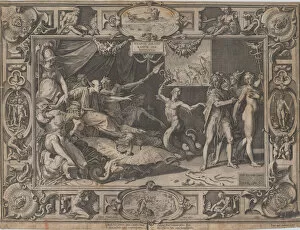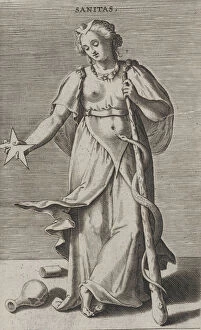Rod Of Asclepius Collection
The Rod of Asclepius, a symbol associated with healing and medicine, has been depicted in various forms throughout history
All Professionally Made to Order for Quick Shipping
The Rod of Asclepius, a symbol associated with healing and medicine, has been depicted in various forms throughout history. From Giovanni Battista Tiepolo's Scherzi series to ancient Greek engravings, this emblem holds great significance. In Tiepolo's artwork, such as "The Philosopher" and "Two Magicians and Two Boys, " the Rod of Asclepius is subtly incorporated amidst vibrant scenes. These paintings showcase the intertwining of magic and medicine, suggesting that healing requires both knowledge and mystical elements. Similarly, in "Satyr Family with the Obelisk" and "Two Astrologers and a Boy, " we see how the rod represents not only physical well-being but also spiritual harmony. It highlights the belief that health encompasses more than just curing ailments; it involves balance within oneself and with nature. Ancient Greek mythology portrays Aesculapius as a hero-god revered for his healing abilities. Engravings depicting him emphasize his connection to medicine through the prominent presence of the Rod of Asclepius. This symbol became synonymous with healthcare practices inspired by Aesculapius' teachings. "The Calumny of Apelles" by Cornelis Cort showcases how even during Renaissance times, this symbol held relevance. In this painting, we witness an allegorical representation where truth (Veritas) stands alongside Misericordia (mercy), emphasizing their importance in medical ethics guided by the principles embodied by Asclepius' rod. Moving forward to 19th-century London, Robert Ashby's title page for "The Microcosm of London" features Sanitas holding a staff entwined with serpents – another depiction closely resembling the Rod of Asclepius. This illustration signifies public health measures taken during that era. Lastly, Philip Galle's engraving from Prosopographia depicts Sanitas once again while referencing Esculapius in the Cardinal Burghesij's residence.









